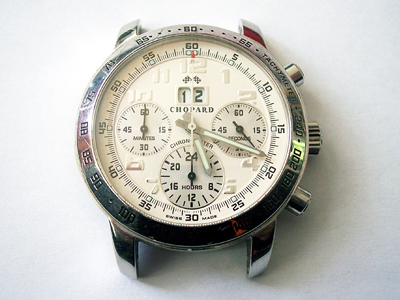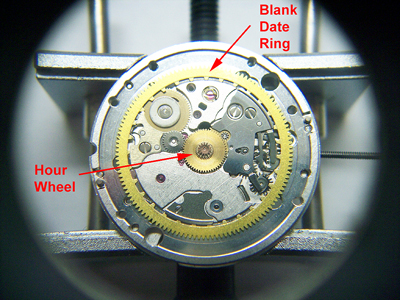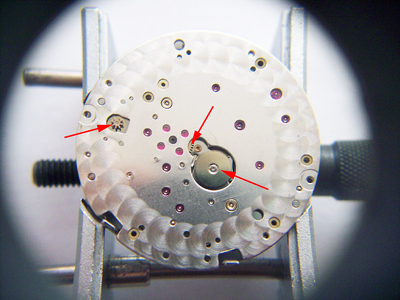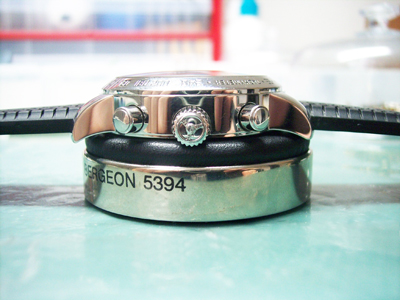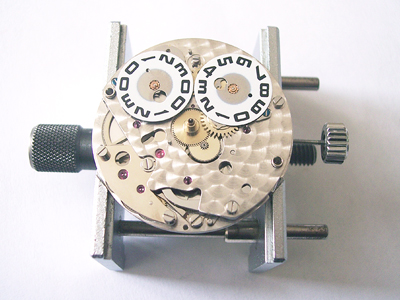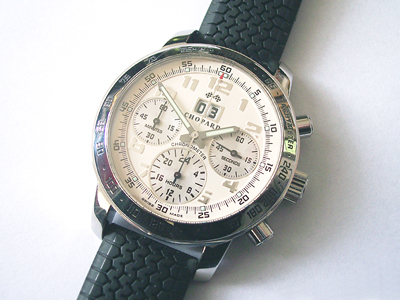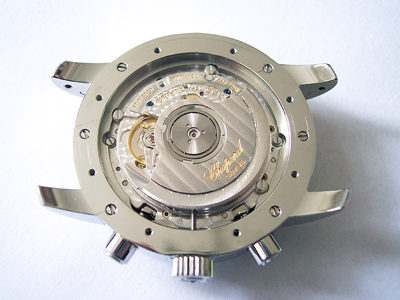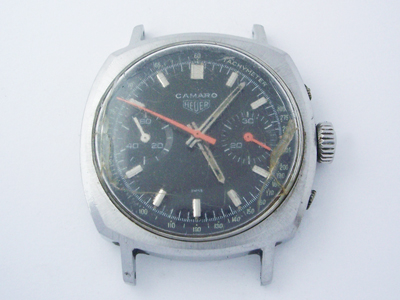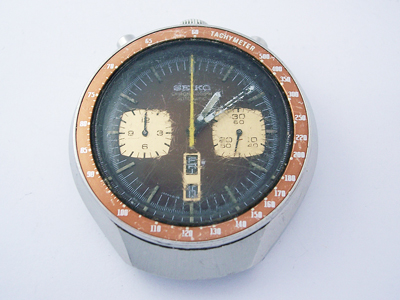Though not as old as the majority of watches on the blog, this Chopard Mille Miglia makes an interesting post. Though the watch was running on arrival, it was losing 15 minutes per week, and the date function wasn’t advancing either by moving the hands past midnight, or quicksetting using the crown.
(Click pictures to enlarge)
This is the third Mille Miglia model that honours the veteran Belgian racing driver Jacky Ickx who competed in 144 Formula 1 races between 1967 and 1979, and had a successful endurance racing career, winning the Le Mans 24 Hour race 6 times. Karl-Friedrich Scheufele, the co-president of Chopard, and Jacky Ickx are good friends and compete in motor racing events together. This friendship was undoubtedly the catalyst for the Ickx series of watches. (The fourth edition is now available, you can see that watch here.)
The movement inside this watch is a decorated and adjusted, 49 jewel, ETA cal. 2892-A2 which has a Dubois Dépraz designed chronograph mechanism. This calibre is a “modular” rather than an “integrated” chronograph, which means that the chronograph and timekeeping parts of the calibre are two independently designed modules coupled together.
With the modules uncoupled you can see how they integrate, the first picture shows shows the top of the timekeeping module (where the dial would sit on a regular ETA cal. 2892). The power from the going train is fed directly into the chronograph module by the hour wheel and the blank date ring advances the date, either normally at midnight or via the quickset.
The second picture shows the underside of the chronograph module, the arrows showing the parts driven by the timekeeping module.
The disadvantage of modular chronograph calibres is that they are generally thicker than their integrated cousins, which of course means that a thicker case is needed to go around them (although this is less of an issue in these ‘big watch’ times). The ETA 2892-A2 also has another quirk in that the crown and pushers are out of alignment when viewing the case from the side.
A routine service solved the timekeeping issue, but finding the date problem required quite a bit of thought. With the dial and hands removed you can see that the date mechanism is mounted on the front of the chronograph module. (Note that even under the dial the top plate has been decorated; another sign of quality.)
This watch has what is referred to as a ‘big date’ wherein the date is made up of two separate discs which rotate independently. The discs have a star shaped gear mounted on their underside, so their position in relation to the mechanism underneath is essential for correct operation.
I can only assume that the watchmaker who last serviced the watch didn’t fully understand how it worked as the discs had been positioned incorrectly. Consequently, the date had fallen into a dead zone and would longer advance. No parts were damaged, so after setting up the mechanism correctly it was working properly again.
With the problems solved, the watch was reassembled which completed the job.
Chopard are celebrating their 150 year anniversary this year and you can see their current range here. (Don’t miss their L.U.C. series of in-house designed and hand finished watches).
Rich.
** Many thanks to Helge Johnsen for letting me feature his watch on the blog. **

